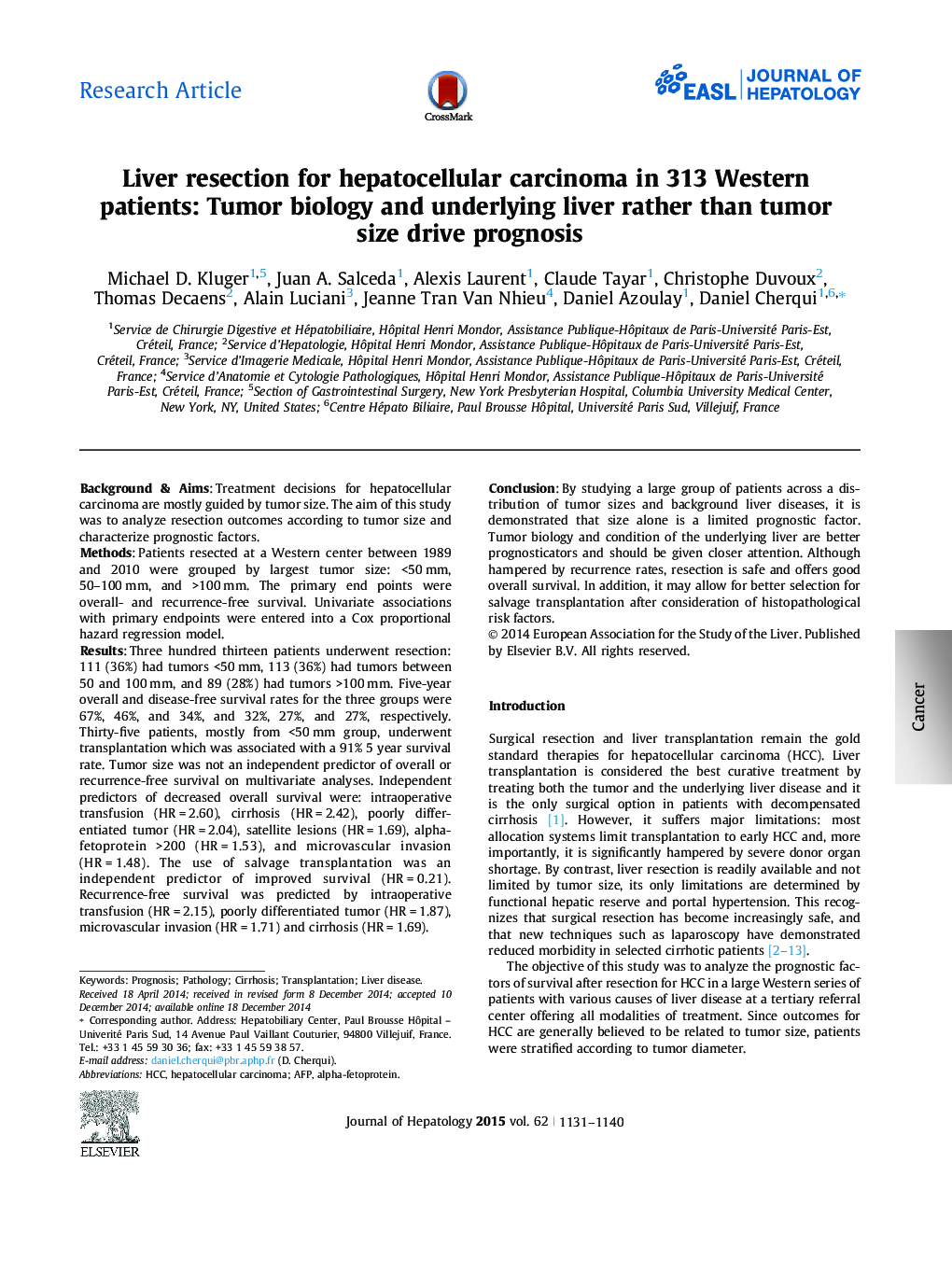| کد مقاله | کد نشریه | سال انتشار | مقاله انگلیسی | نسخه تمام متن |
|---|---|---|---|---|
| 6103041 | 1211122 | 2015 | 10 صفحه PDF | دانلود رایگان |
Background & AimsTreatment decisions for hepatocellular carcinoma are mostly guided by tumor size. The aim of this study was to analyze resection outcomes according to tumor size and characterize prognostic factors.MethodsPatients resected at a Western center between 1989 and 2010 were grouped by largest tumor size: <50Â mm, 50-100Â mm, and >100Â mm. The primary end points were overall- and recurrence-free survival. Univariate associations with primary endpoints were entered into a Cox proportional hazard regression model.ResultsThree hundred thirteen patients underwent resection: 111 (36%) had tumors <50Â mm, 113 (36%) had tumors between 50 and 100Â mm, and 89 (28%) had tumors >100Â mm. Five-year overall and disease-free survival rates for the three groups were 67%, 46%, and 34%, and 32%, 27%, and 27%, respectively. Thirty-five patients, mostly from <50Â mm group, underwent transplantation which was associated with a 91% 5 year survival rate. Tumor size was not an independent predictor of overall or recurrence-free survival on multivariate analyses. Independent predictors of decreased overall survival were: intraoperative transfusion (HRÂ =Â 2.60), cirrhosis (HRÂ =Â 2.42), poorly differentiated tumor (HRÂ =Â 2.04), satellite lesions (HRÂ =Â 1.69), alpha-fetoprotein >200 (HRÂ =Â 1.53), and microvascular invasion (HRÂ =Â 1.48). The use of salvage transplantation was an independent predictor of improved survival (HRÂ =Â 0.21). Recurrence-free survival was predicted by intraoperative transfusion (HRÂ =Â 2.15), poorly differentiated tumor (HRÂ =Â 1.87), microvascular invasion (HRÂ =Â 1.71) and cirrhosis (HRÂ =Â 1.69).ConclusionBy studying a large group of patients across a distribution of tumor sizes and background liver diseases, it is demonstrated that size alone is a limited prognostic factor. Tumor biology and condition of the underlying liver are better prognosticators and should be given closer attention. Although hampered by recurrence rates, resection is safe and offers good overall survival. In addition, it may allow for better selection for salvage transplantation after consideration of histopathological risk factors.
Journal: Journal of Hepatology - Volume 62, Issue 5, May 2015, Pages 1131-1140
